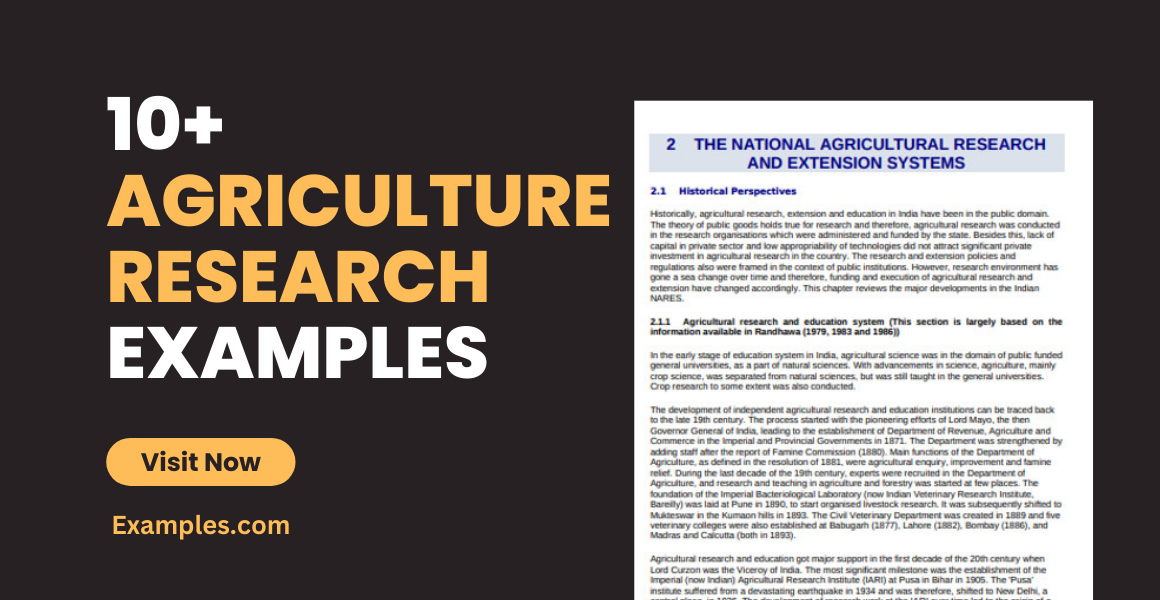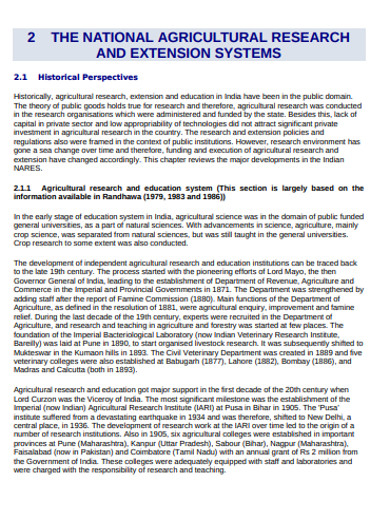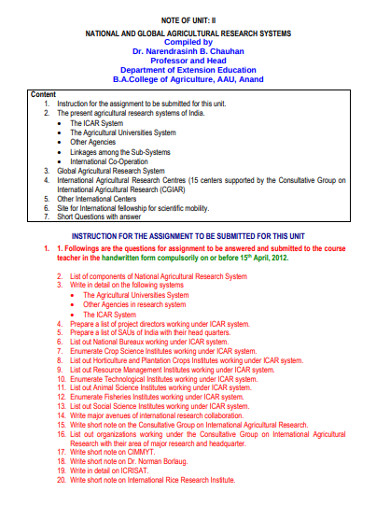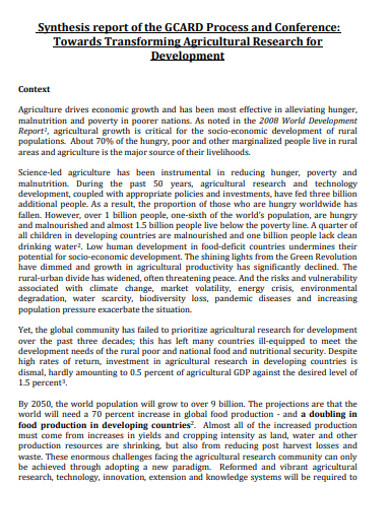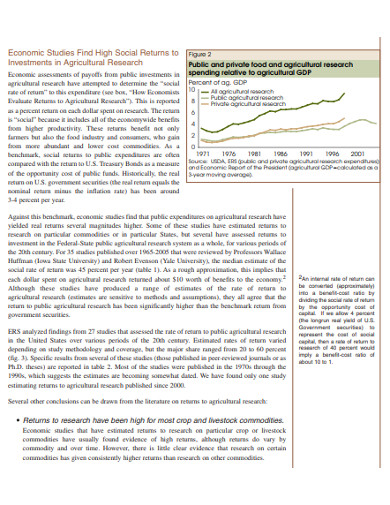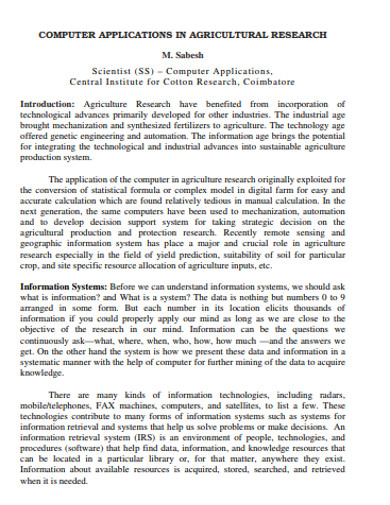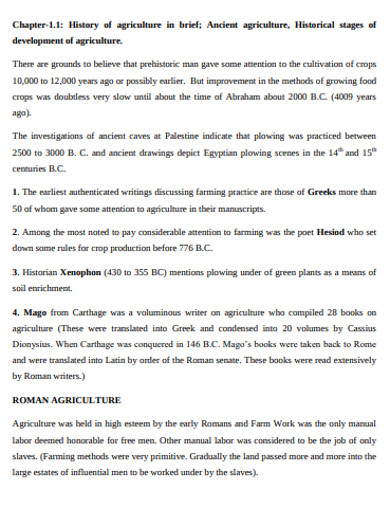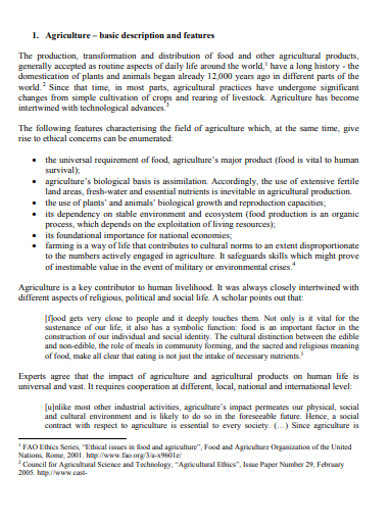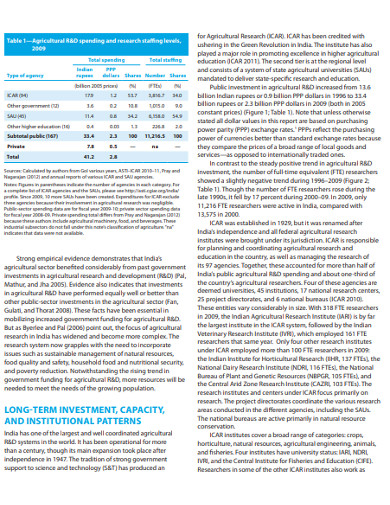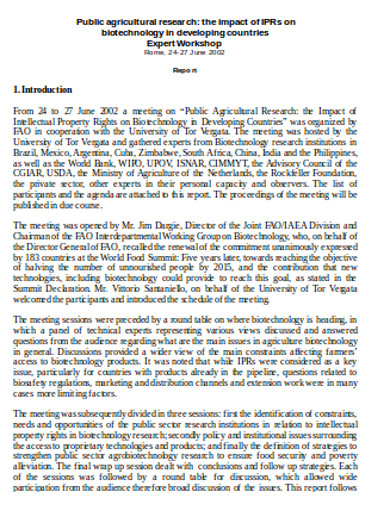10+ Agriculture Research Examples to Download
Industrial areas are associated with concentrated pools of personal and economic opportunities. However, urban imagery is misconstrued as the sole concretization of progress. We are abandoning agricultural lands in search of greener pastures in the cement and steel wonderland. We are converting fertile fields into urban projects, gambling our food source, for one. To mitigate future more devastating losses, academic institutes have poured hard work into writing researches in agriculture.
Agriculture research can be either or both qualitative and quantitative research. Agricultural science is not a new idea. It started roughly around the time when man learned he could grow his food. The concept was simple: “Plant A is edible, Plant B is not. Let’s plant more of A.” As humans practiced growing plants and animals for general consumption, we learned better ways to generate a better yield. Soon, we developed tools for the trade: chemicals, machines, and their derivatives that make farming more systematic and efficient.
Why We Research
More than 20,000 years since man’s first attempt at cultivation, yet a lot about agriculture is still an open question. Farming is not just about sowing seeds and reaping fruits. Complex processes occur between the planting and harvesting periods. In the past, farmers rely on trial-and-error methods to find out what works for them. Not having a strong and reliable foundation for our next move could mean our families would be hungry indefinitely. Just producing food wasn’t enough.
Food security
The marriage of agriculture and education allowed better crop management. We increased the yield and nutritional value of plants while making them grow healthier. We saw development in farming methods and innovations based on research and scientific investigations. An in-depth understanding of plant biology allowed for improved food production and reduced damages from pestilence and acts of God.
It is in the genes
Rice is one of the primary agricultural commodities in the world. Rice flowers bloom at a specific period in the morning, at times for two hours, for a few days. In that short time, the plant must be able to pollinate successfully. However, favorable weather will not discount the impact of pests and infections on the plant’s normal life cycle. One of the things that agricultural research scientists in the lab have worked on is tinkering with the genes of different rice varieties to extend or shorten the flowering time and making the plant resistant to fatal infestations and conditions.
Bigger is better
Another feat in the history of agriculture is farmers transforming corn into what it is today. In the past, a starkly different-looking plant would bear small fruits, not unlike the size of our fingers. The early civilization in Mexico did not have the present knowledge and resource about corn’s biology and genetics. It took several thousands of years of selectively cultivating the desirable traits of the plant teosinte into the hearty sized corn cob that we know and love today.
But not always
Not all agriculture research has turned out desirable, however. For years, people have worked on producing a big, juicy variant of red tomatoes. Researchers have tinkered with the genes that influence the size of the fruit. By doing so, they have unintentionally affected the genes that make the tomatoes taste good. Therefore, some big tomatoes today aren’t palatable as the genetic pathway responsible for its distinct sweetness was accidentally altered.
Nevertheless, agricultural science is hard at work on its effort to keep the world fed and healthy. It is unswayed in finding better ways to produce food that meet the demands of the modern world.
Price For Progress
However, it seems that the modern world is the giant goliath of farmers and scientists. Our idea of progress and advancement left out the contribution of agriculture in the past. Not to mention, people now prefer working in offices and establishments. The rise in population, decreasing land area to grow food, and the declining number of people who see farming as a good job to get all threaten our food security.
In urban areas, indoor gardening is gaining momentum. The rising prices of commodities makes growing your food a sensible choice. However, we should note that that small space in your apartment balcony or that small strip of land beside your house can’t feed you and your family forever.
10+ Agriculture Research Examples
If we can’t regain the farm lands or provide support to the dwindling population of farmers, we will face food crisis. We need to intensify agricultural research to prevent global hunger.
1. National Agriculture Research Example
2. Global Agriculture Research System Example
3. Agriculture Research in Development Example
4. Agriculture Investment Research Example
5. Computer Application in Agriculture Research Example
6. Standard Agriculture Research Example
7. Printable Agricultural Research Example
8. Long Term Agriculture Research Example
9. Agriculture Assessment Ethics Research Example
10. Sample Agriculture Research in Development Example
11. Public Agriculture Research Example
Getting Started
The following are reminders on how to make writing your agricultural research papers less arduous.
1. Define The Problem
Your first step to any research is identifying the area that you wish to work on. A literature review is a good way to start your case. Reading on updated and recent materials regarding your chosen topic will help you explore the problem and determine its place in the context of society. Is the problem urgent? Is your contribution original? By spotting the gaps in related literature, you can give new information or significantly improve current practices.
2. Write A Proposal
Drafting a research proposal requires the researcher’s familiarity with the chosen topic and thesis design. Reviewers will look into your capacity to perform the study before it is approved. The convincing pledge of skill is found in your literature review. When you are vying for a study grant, you should consider the interests of the institution that you are approaching. Their priorities should be aligned with the goals of your research.
3. The Common Good
Since you are proposing a study in agriculture, you should be aware of the goal of this community. Your expected findings should be beneficial to the farmers and the agricultural sector. The problem should be specific, clear, relevant, and timely. Even if the result will be negative, the study should still have something useful to provide the community. Don’t forget, your research must follow all the ethical guidelines for research.
4. Be Two Steps Ahead
Create a visual roadmap for your research project. Flow charts and research plans are organization tools that will help you a great deal during your entire endeavor. They keep you grounded on the things you have to perform. You can also track your progress the whole time using Gantt charts, and see to it that your goals are achieved. Cover your bases and plan a successful study ahead.


